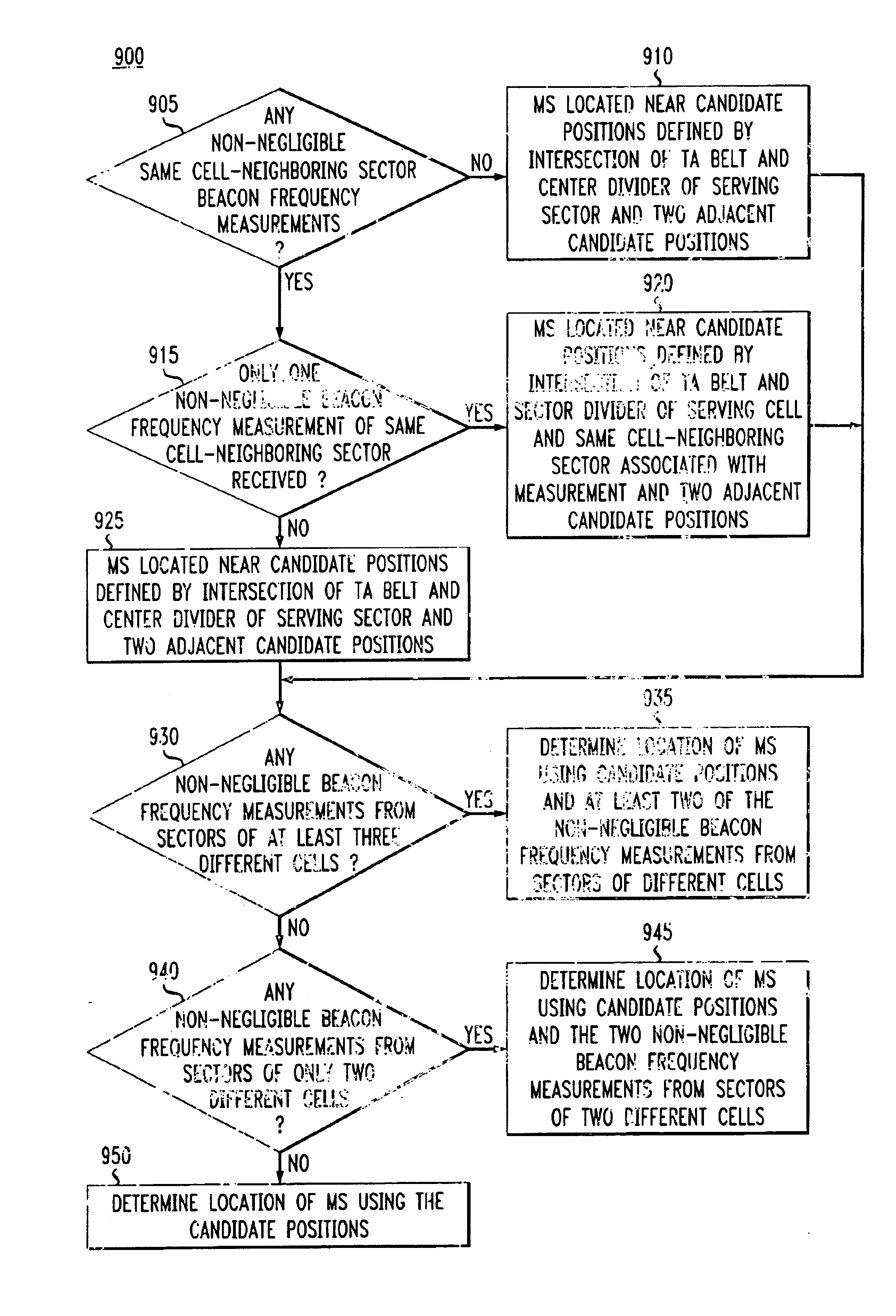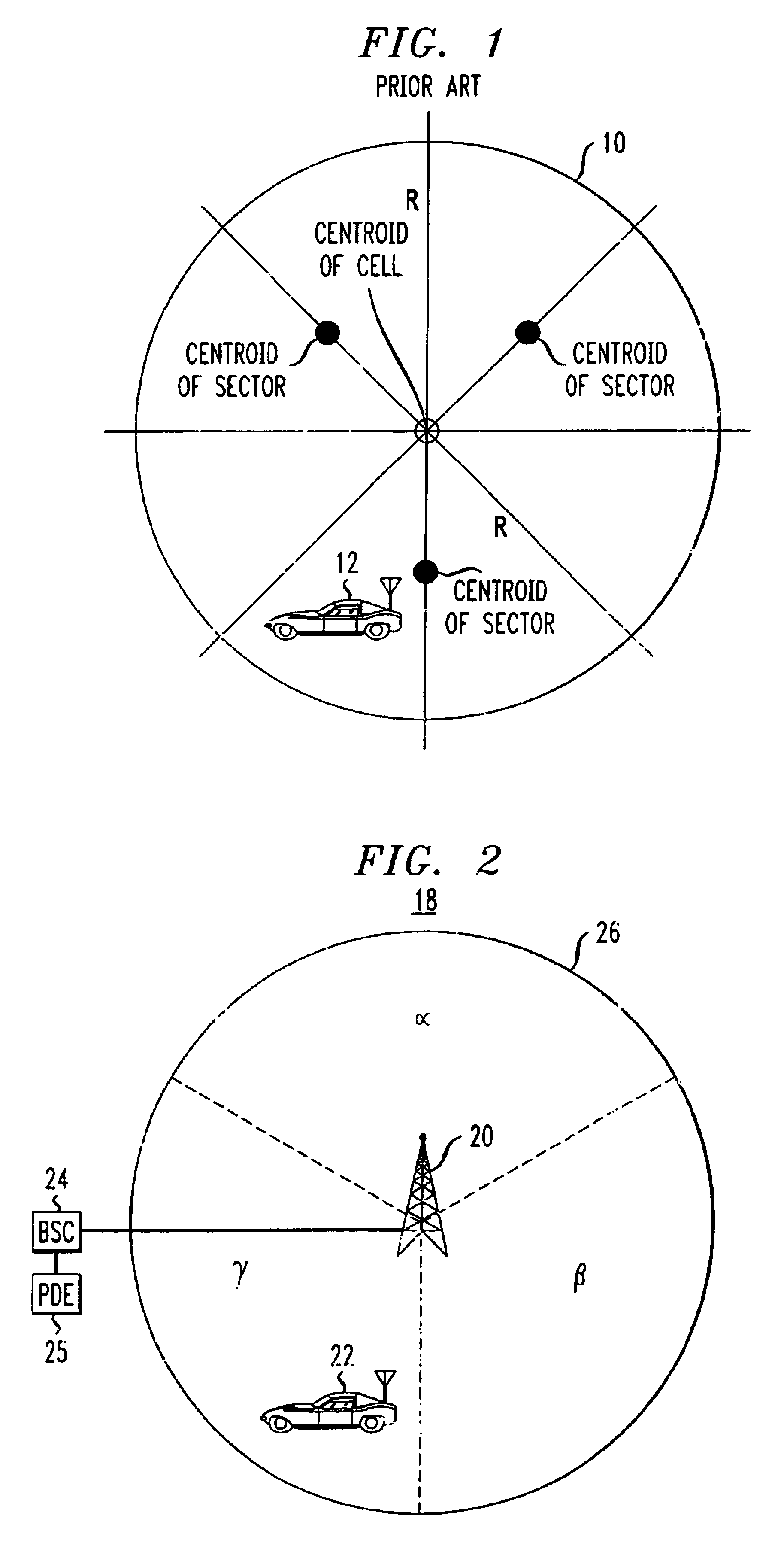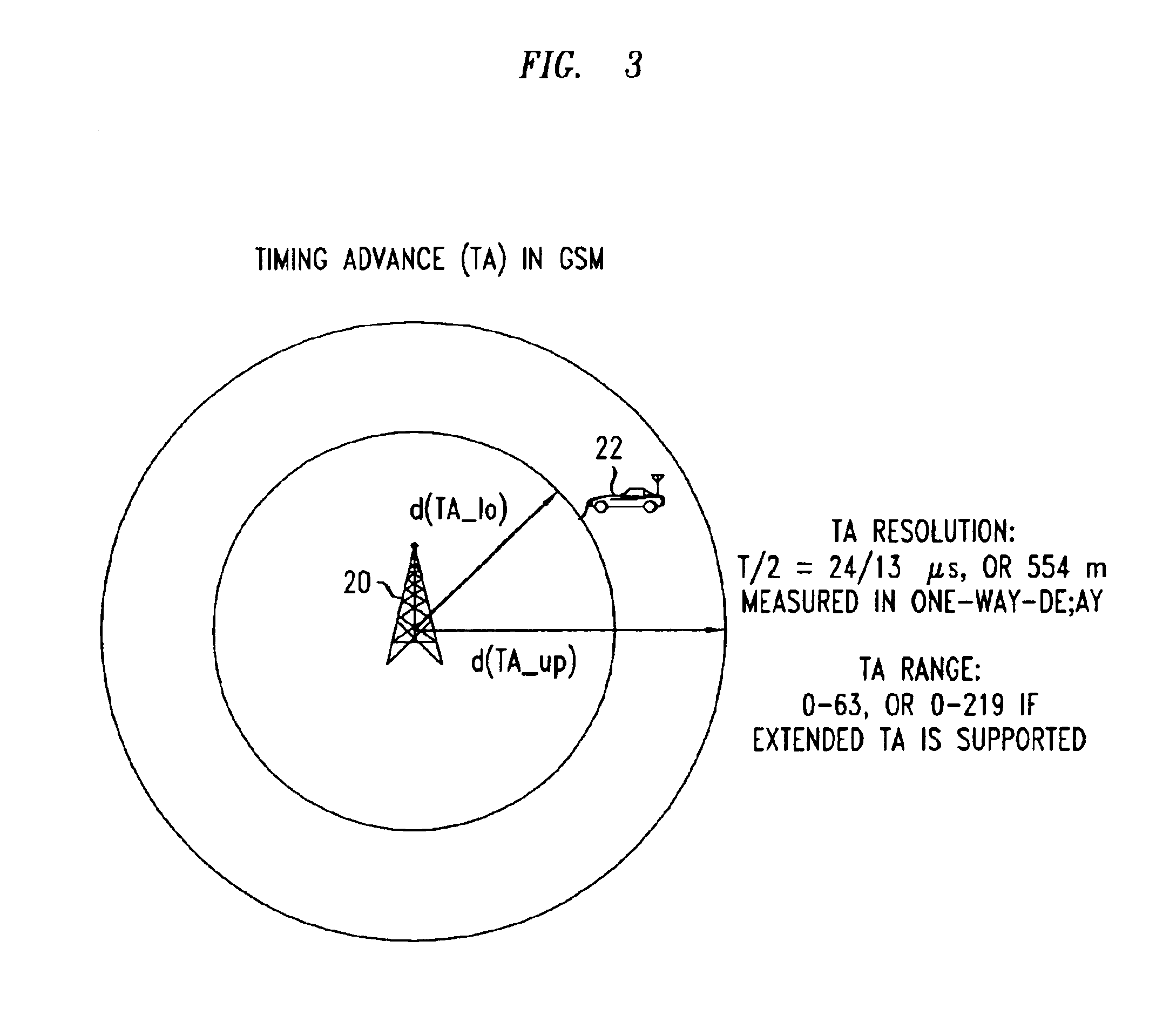Geolocation using enhanced timing advance techniques
a technology of enhanced timing advance and geolocation, applied in the direction of direction finders using radio waves, instruments, wireless communication, etc., can solve the problems of inability to backward compatibility of e-otd and agps methods from the perspective of second generation mobile-stations, and the average error associated with the cell/sector id can be quite large, so as to achieve the effect of accurate location and location accuracy
- Summary
- Abstract
- Description
- Claims
- Application Information
AI Technical Summary
Benefits of technology
Problems solved by technology
Method used
Image
Examples
first embodiment
[0029]In step 430, the received beacon frequency signal strength measurements associated with same cell-neighboring sectors are used to determine a location for MS 22. In this embodiment, there are six candidate locations for MS 22 within TA belt 28. These six candidate locations are determined using the sector ID, TA value and information associated with the base station, and are positioned approximately at the intersections of TA belt 28 and center and sector dividers of the cell. Sector dividers are defined by the radio frequency (RF) coverage of each cell and may not be straight lines. The sector dividers may, however, be approximated as straight lines using conventional least-square-estimation method. Center dividers are lines associated with sectors that extend outward from the center of a cell towards the edge of the cell approximately dividing the associated sector in half. FIG. 6 depicts these six candidate locations 61, 62, 63, 64, 65 and 66 for MS 22 within TA belt 28. Th...
second embodiment
[0034]FIG. 9 depicts a flowchart 900 illustrating step 430. In step 905, PDE 25 determines if any beacon frequency signal strength measurements associated with any same cell-neighboring sectors were received in step 410. If PDE 25 did not receive any non-negligible beacon frequency signal strength measurements associated with any same cell-neighboring sectors, then PDE 25 determines, in step 910, that MS 22 is located at or near one of three candidate locations: the candidate location defined by the intersection of TA belt 28 and the center divider of the serving sector indicated by the received sector ID, and the two adjacent candidate locations. For example, suppose MS 22 is currently being served by sector β and no beacon frequency signal strength measurements associated with any same cell-neighboring sectors were received by PDE 25, then PDE 25 would be located at or near candidate locations 64, 69 and 70.
[0035]Otherwise, flowchart 900 continues to step 915 where PDE 25 determin...
PUM
 Login to View More
Login to View More Abstract
Description
Claims
Application Information
 Login to View More
Login to View More - Generate Ideas
- Intellectual Property
- Life Sciences
- Materials
- Tech Scout
- Unparalleled Data Quality
- Higher Quality Content
- 60% Fewer Hallucinations
Browse by: Latest US Patents, China's latest patents, Technical Efficacy Thesaurus, Application Domain, Technology Topic, Popular Technical Reports.
© 2025 PatSnap. All rights reserved.Legal|Privacy policy|Modern Slavery Act Transparency Statement|Sitemap|About US| Contact US: help@patsnap.com



